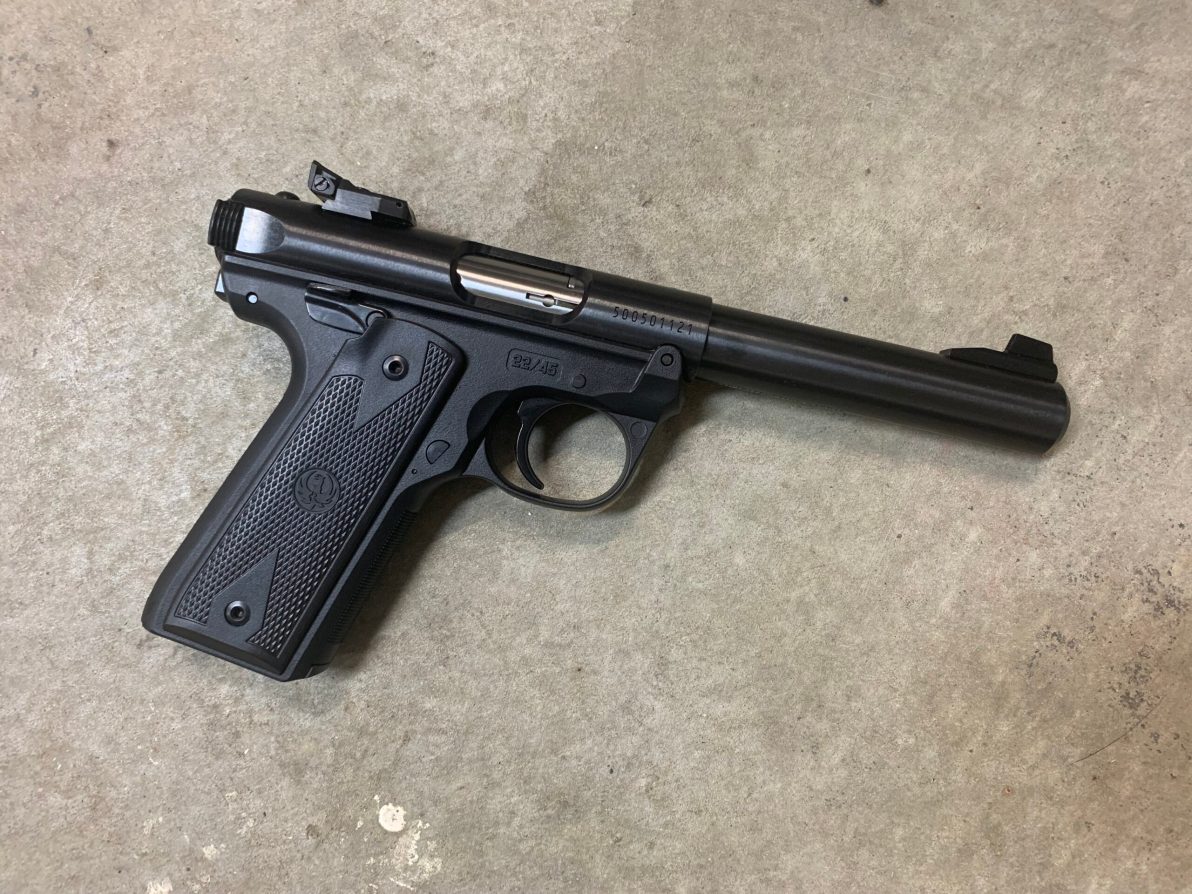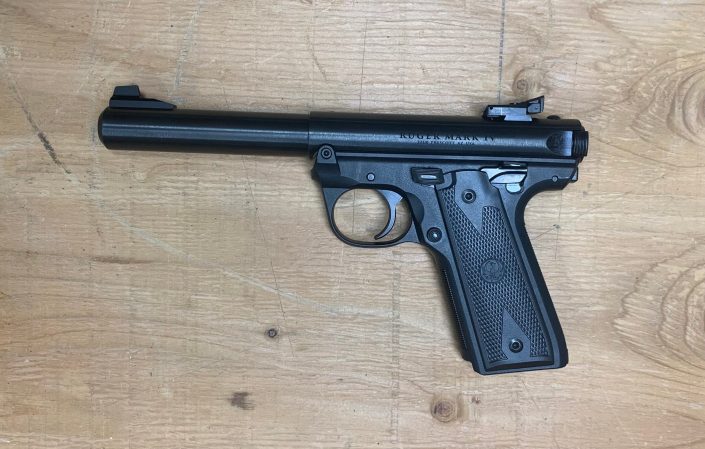We may earn revenue from the products available on this page and participate in affiliate programs. Learn More ›
The Ruger Mark IV 22/45 is a .22 pistol with an iconic look, an unlikely origin, and a hell of a reputation to live up to. The lineage that began with the Ruger Standard, which Bill Ruger unveiled in 1949, continues today with the Mark IV and has produced the most popular .22 pistols ever made. Although many shooters mistakenly assume that the Ruger .22 pistols were inspired by the aesthetics of the German Luger, they were actually downsized copies of the Japanese Nambu pistols used in World War 2.
The 22/45 variation of the Ruger pistols was introduced in 1992 and sports the grip size and shape of the 1911 .45 ACP. The Ruger Mark IV 22/45 is the current base model of the pistol, and it might just make the standard-setting Ruger Mark IV better than ever.
The Ruger Mark Family Tree
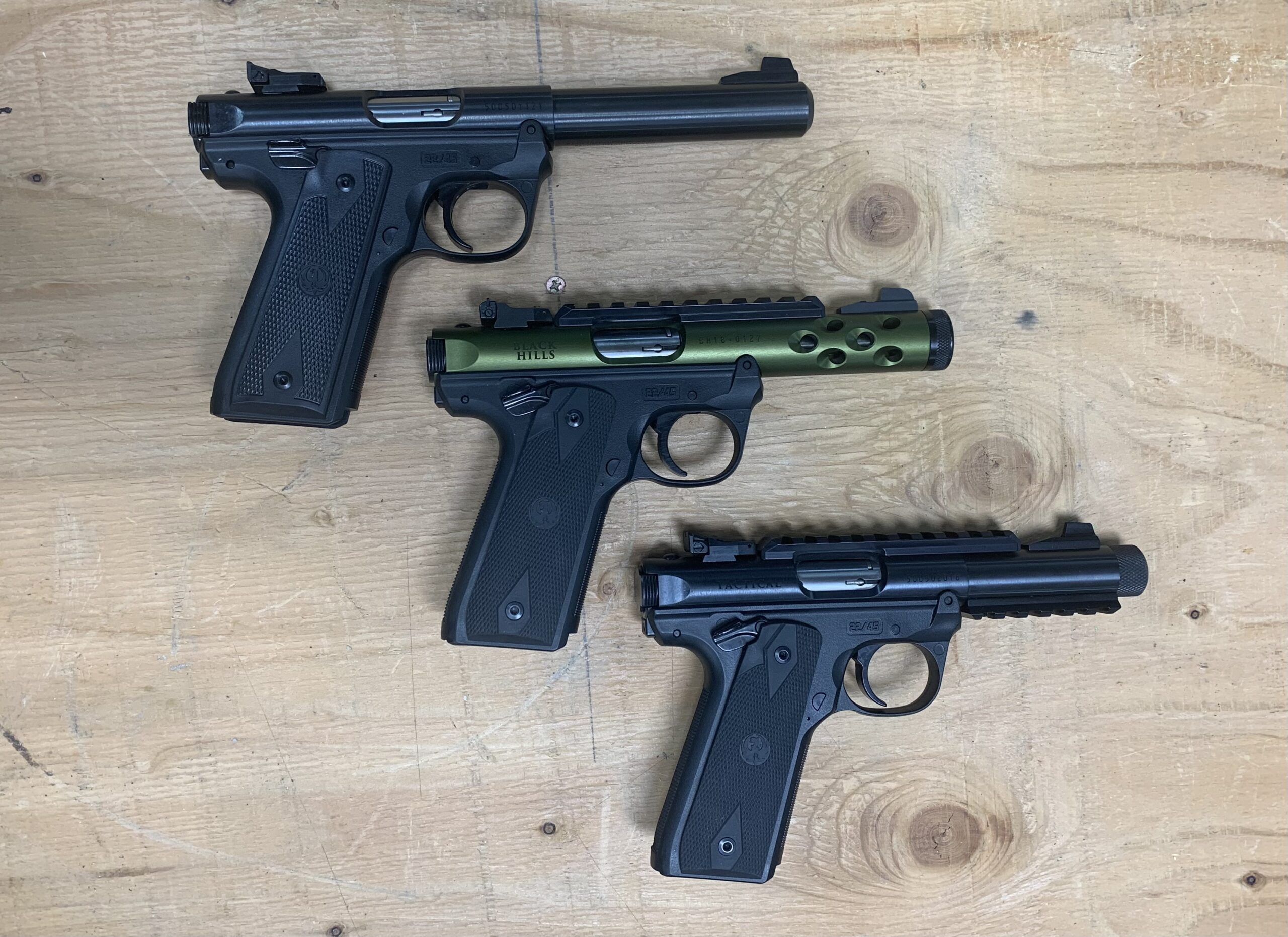
There are many models and variations of Ruger semi-auto .22 pistols that stretch across 75 years of production; but sorting them out is simple. The Ruger Standard Model was the original pistol introduced by Bill Ruger in 1949. Since then, there have been Mark I, Mark II, Mark III, and now Mark IV series updates to the line. The Mark IV is this version being made now.
Within the Mark families, the lineage splits between standard Mark pistols, which have the traditional-looking frame and grip, and the 22/45. The 22/45 began with the Mark II series, and there are Mark II, Mark III, and Mark IV 22/45 pistols. Each of these two main branches of the Mark IV family has several variants that are currently being produced. The Ruger Mark IV 22/45 is the most basic 22/45 model in the lineup, and other models like the Ruger Mark IV 22/45 Lite and Ruger Mark IV 22/45 Tactical are enhanced versions of it.
Ruger Mark IV 22/45 Specs
- Caliber: .22 LR
- Capacity: 10+1
- Action: Semi-auto, recoil-operated, hammer-fired
- Barrel: 5.5-inch, bull-profile, recessed crown
- Dimensions: 9.75 inches (L) x 5.5 inches (H) x 1.22 inches (W)
- Weight: 36 ounces
- Frame: Polymer
- Bolt and Receiver: Alloy steel
- Optics: Drilled and Tapped Receiver, no rail
- Controls: Ambidextrous safety, right side lever removable, other controls right-handed
- Grip: Polymer, Serrated front, checkered back, 1911-style grip scales
- Sights: Fully adjustable notch rear, fixed front post, black
- Trigger: Curved, 4 pounds, 9 ounces (measured)
- Price: $419
Nuts and Bolts of the Ruger Mark IV 22/45
The beauty of the Mark IV pistols is in their simplicity. The basic design of the Ruger Mark IV 22/45 is still very similar to the originals that Bill Ruger modeled after the Nambu. It’s a recoil-operated semi-automatic that uses a reciprocating bolt assembly housed in a tubular receiver. The simple design has aged well and is known for its accuracy and reliability. That’s an impressive accomplishment considering that .22 LR ammunition is usually the dirtiest and most unreliable stuff you could ever put through a modern firearm.
Barrel, Receiver, and Bolt
The most prominent features on the Ruger Mark IV are its fixed barrel, tubular receiver, and reciprocating bolt. Most semi-automatic centerfire pistols have either a non-fixed barrel, reciprocating slide assembly, or both; a fixed barrel and receiver aren’t as common. Most other rimfire pistols do use fixed barrels, but the majority have a reciprocating slide rather than a bolt that moves inside a stationary receiver.
The Mark IV 22/45 has a 5.5-inch heavy bull-profile barrel that adds significant heft to the gun. The muzzle isn’t threaded on this model, but others like the 22/45 Lite and 22/45 Tactical are threaded.
The barrel is screwed into the receiver, which is little more than a blued-steel tube with a fixed ejector fastened into it. This pistol has a fixed front sight and a dovetail-fit adjustable rear sight. The base 22/45 model doesn’t come with any rails, but the receiver is drilled and tapped so you can mount one if you want.
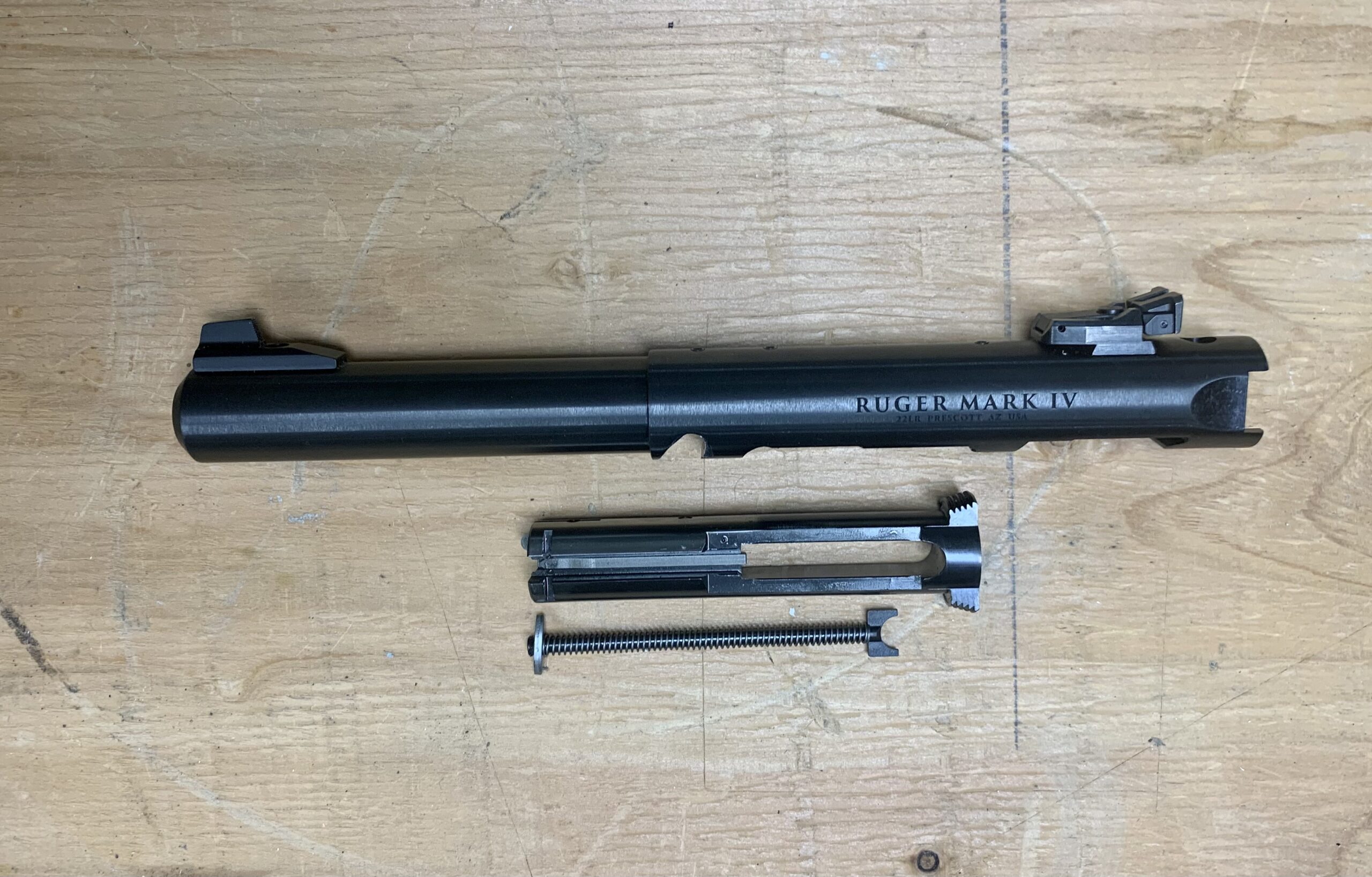
The bolt is simple too: a cylindrical body with a simple claw extractor, firing pin, and recoil spring/guide rod assembly. The bolt is operated via two side cocking tabs at the rear, and when shooting, the body of the bolt reciprocates out the back of the receiver. The rear of the bolt is hollowed out, like an AR-15’s bolt, which allows the hammer to strike the firing pin.
What Makes a Mark IV?
Because the entire series of Ruger Mark pistols is very similar in design, the differences are sometimes lost in the mix. Like the universe of Glock pistols that all look the same to the un-trained eye, there are differences in each generation and model of Ruger .22 pistol. Whether considering the standard or 22/45 variation, the most notable feature of the Mark IV series is its ultra-simple takedown and receiver-frame interface.
The front of the receiver features a rounded pivot notch that corresponds to a steel rod in the front of the frame. When locked on, the rear of the receiver is held in place by a sliding tab that fits into another notch in the receiver. To take the pistol apart, just engage the safety, press the button at the back of the receiver, and lift the barrel and receiver free of the frame. It takes less than a second. The bolt is removed by pulling it out the back of the receiver, and all parts can be easily cleaned—something that’s critical for .22 pistols.
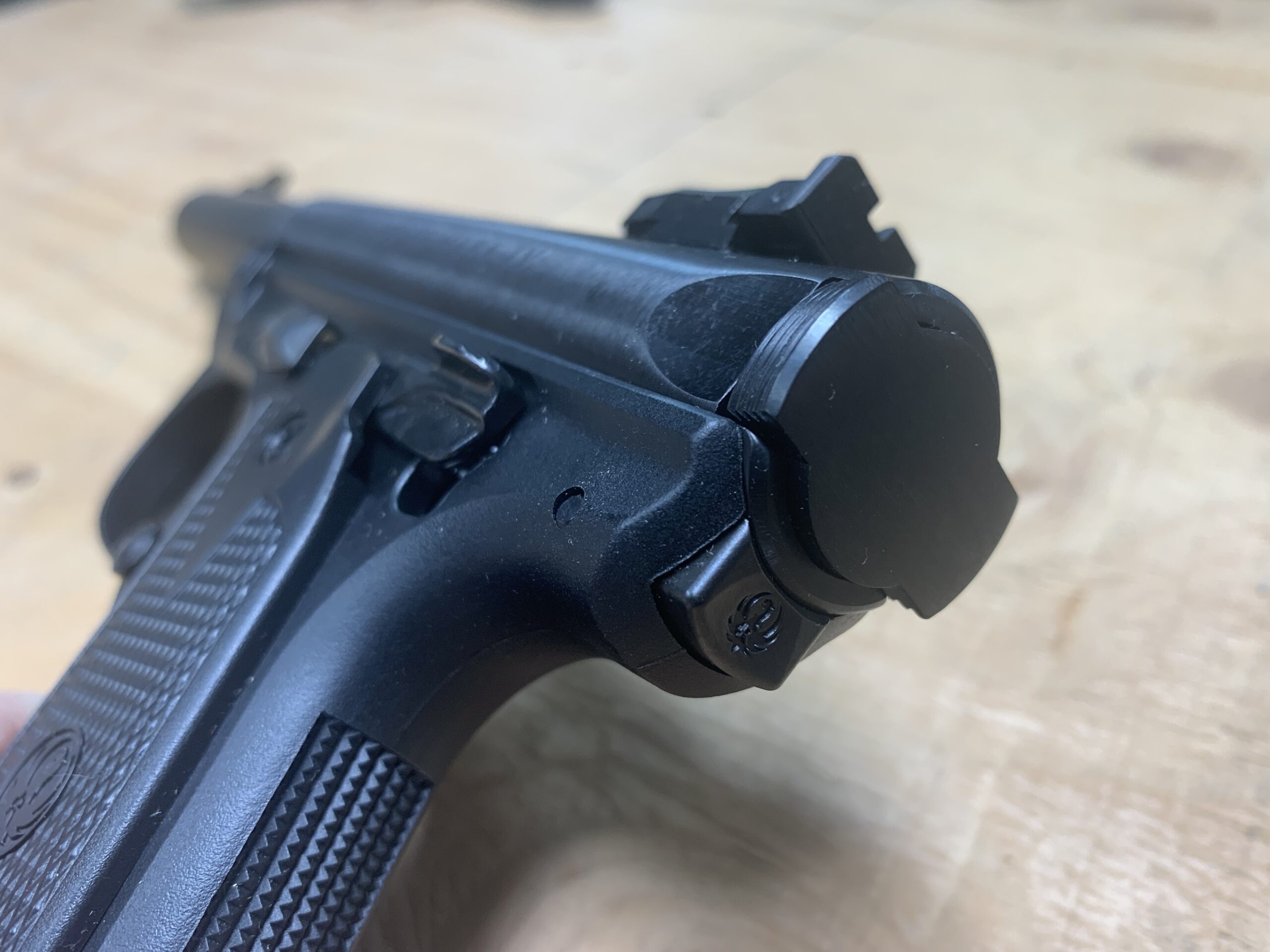
The Ruger Mark IV 22/45 Frame
Standard-style Ruger Mark IV pistols like the Mark IV Tactical have a steel or aluminum frame with the classic steep-angled Nambu grip. These pistols aren’t uncomfortable to shoot, but many shooters want grips that feel more like the familiar 1911. The 22/45 variation of the Mark series gives us just that.
The overall feel, grip angle, and control locations are much like a 1911 in .45 ACP. That’s where the “45” in 22/45 comes from. Although the grip is styled after the 1911, there’s no grip safety, and the trigger and hammer mechanisms are the same as in other Mark IV pistols. In-fact, you can swap Mark IV uppers between standard and 22/45 frames. It’s only the grip dimensions and magazine base plates that are different. Like other Mark IV models, the frame of the pistol houses a hammer assembly that is concealed when the receiver is installed.
Handling and Shooting the Ruger Mark IV 22/45
The Ruger Mark series didn’t become the most popular .22 pistol in America by being a drag to shoot. They’re fun, silky-smooth, and accurate. They’ve got good two-stage triggers and all feed from single-stack 10-round magazines. Still, there’s no free lunch, and no gun we test gets a heritage-based free pass. Here’s what I found while shooting the Ruger Mark IV 22/45.
Standard Vs. 22/45 Magazines
All the Ruger Mark IV pistols use essentially the same magazines but, because of the different baseplates, you can only use 22/45 magazines in 22/45 pistols and standard magazines in the standard-style pistols. The single-stack 10-round magazines have long been the norm for .22 LR pistols and, although that’s rapidly changing, it’s not antiquated yet. The Ruger’s magazines are easy to load and use. They have a button on the side to compress the spring and it makes loading cartridges easy.
The larger baseplate on the 22/45 magazines makes them easier to handle and index correctly than the standard-style mags. The smaller bases of the standard magazines make it a little more difficult to tell which direction the bullets are facing by feel. Also, the larger grip of the 22/45 makes seating the magazines a little less tedious.
A nice feature of the Ruger Mark IV 22/45 is that magazines eject from the frame with authority. The magazine is pushed free by a spring-loaded button that is compressed by the magazine’s base plate. When the magazine catch button is pressed, the mag comes zipping right out.
A Contemporary Ruger Mark IV Grip
The 1911 has been around about 40 years longer than the Ruger .22, but its grip profile and angle are more relevant today than the steep Japanese-style grip on the traditional-style Mark IV. The Nambu grip feels good and is very comfortable to shoot one-handed, but it doesn’t jibe as well with contemporary two-handed grip styles. It works, sure, but the 1911-style grip improves control, speed, and accuracy for most shooters.
The Ruger Mark IV 22/45 has ambidextrous safety levers positioned as they would be on a 1911, and the right-side lever is removable. While shooting the standard Mark IV Tactical, I would regularly bump the right-side lever while shooting with a tight two-handed grip, but I didn’t encounter this issue while shooting the 22/45 model. The bolt stop lever is located where the slide stop lever would be on a 1911, and it’s easy to reach without breaking my grip. The right-handed magazine catch button isn’t reversible and, like the other controls, it’s right where it would be on your 1911.
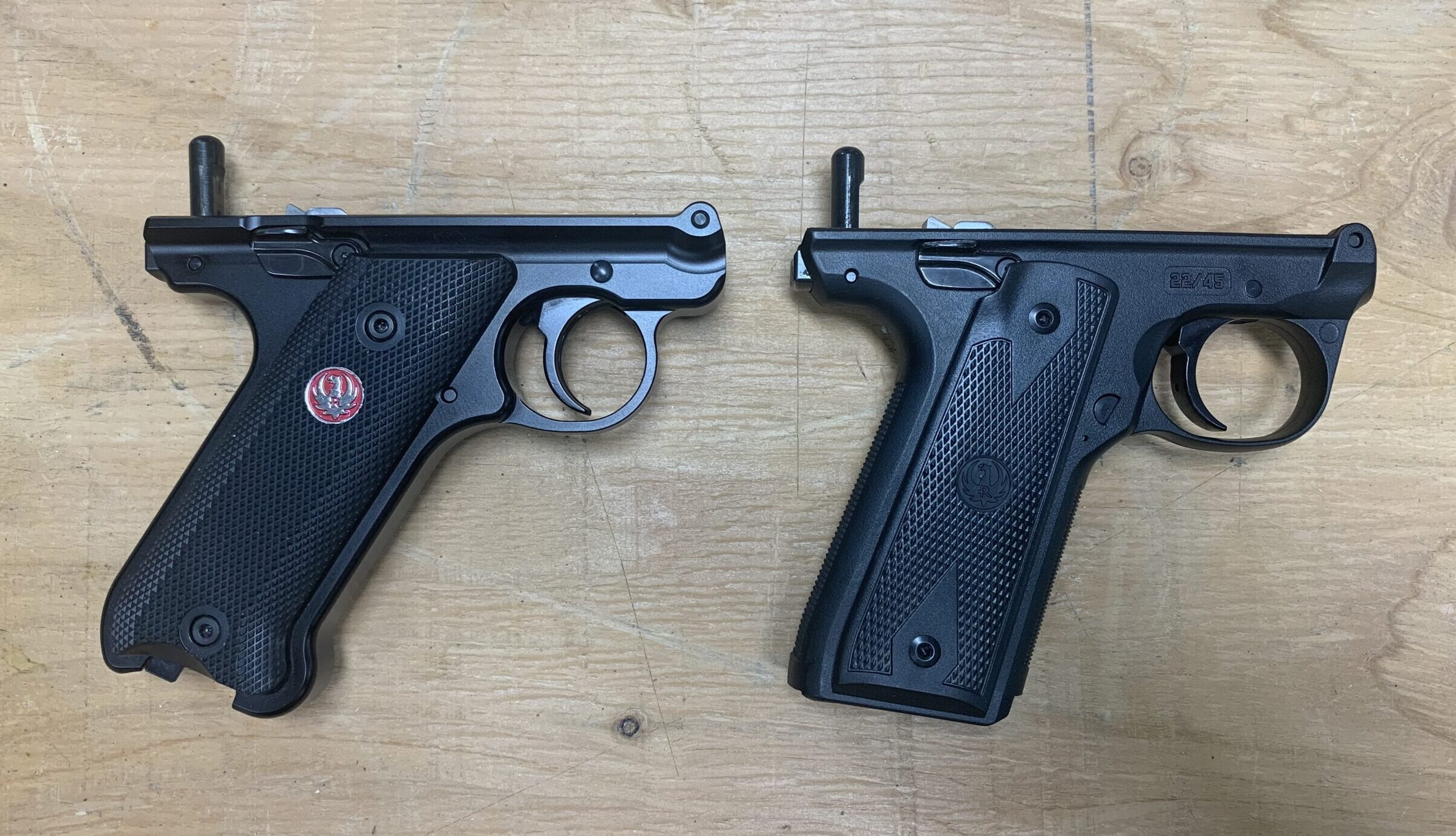
Ruger Mark IV 22/45 Accuracy and Reliability
The Ruger Mark pistols are constantly touted for their accuracy, and they all shoot pretty damn well. The Mark IV 22/45 is accurate enough to be practical for hunting, plinking, or even bullseye competition. I got my best groups with Eley Remington Target ammo, firing five-shot groups from a supported position at an NRA B-2 target at 50 feet. With the factory iron sights, I averaged .894-inch groups; that’s tight enough to keep them all in the 10-ring.
The trigger on the Mark IV 22/45 is good, but it could be better. Unlike most pistols, the Mark IV has a two-stage trigger. This means that when pulling the trigger, you pull through a first “stage” that is a significant take-up before meeting a stiff wall. That stiff wall is the second stage. A good two-stage trigger will allow you to break shots cleanly with minimal movement with a crisp second stage; it’s a trigger style that has been used in various disciplines of target shooting for over a century. Although the trigger on the 22/45 is good, there is a bit of travel in the second stage that, if it were cleaned up, would improve a shooter’s accuracy.
My Ruger Mark IV 22/45 functioned well with a variety of target and bulk ammo including Winchester Super-X Power Point, CCI Standard Velocity, CCI Blazer, and Browning Pro 22. All the ammo I tested was accurate enough to hunt or plink with and, except for a single dud round, none of it gave me any trouble running through the gun.
I fired just shy of 1,000 rounds through the pistol in testing and cleaned it thoroughly about every 250 rounds. Just about all .22 rimfire ammo is waxy and dirty, and no semi-auto will work forever without being mucked out and oiled occasionally.
Read Next: Best 9mm Pistols of 2023
What the Ruger Mark IV 22/45 Does Well
The Mark IV 22/45 is accurate and has the weight of a heavier-caliber gun. It’s simple, optimized for easy cleaning, and the 1911-style grip works well with contemporary shooting styles.
Where the Ruger Mark IV 22/45 Could Improve
Being that this long-barreled version is capable of being fitted with an optic rail or nice target sights, accuracy could be improved with a better trigger.
